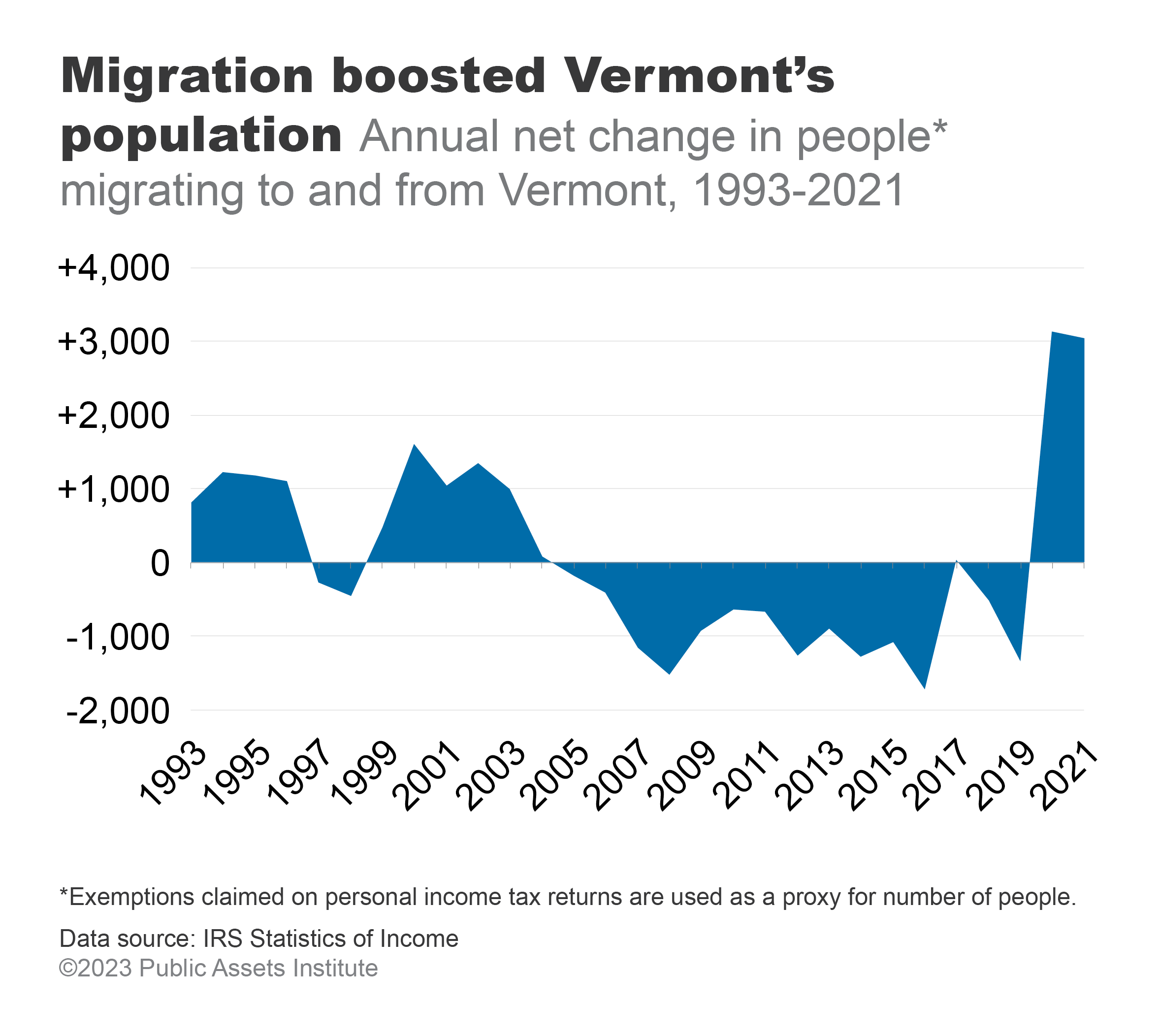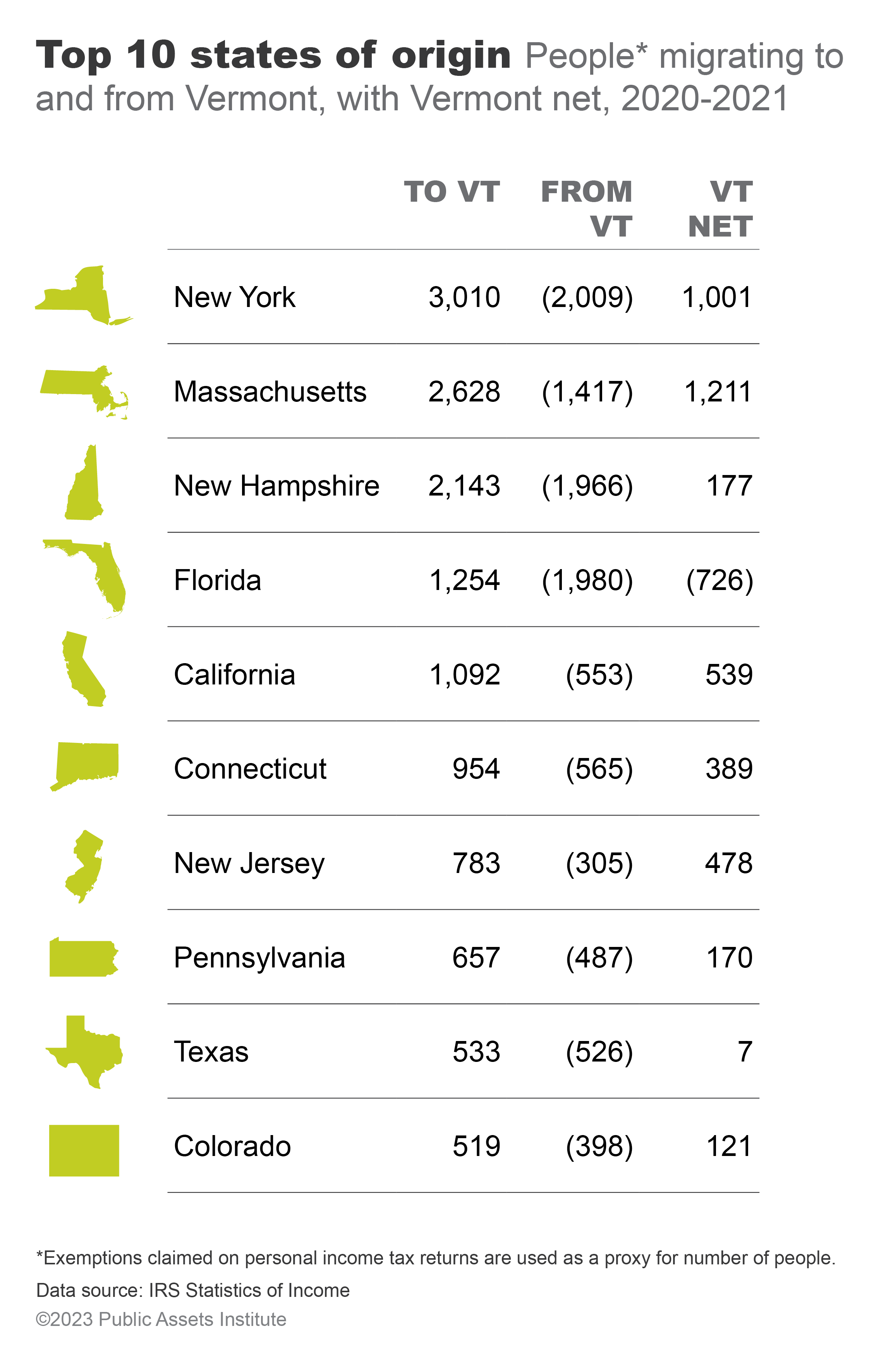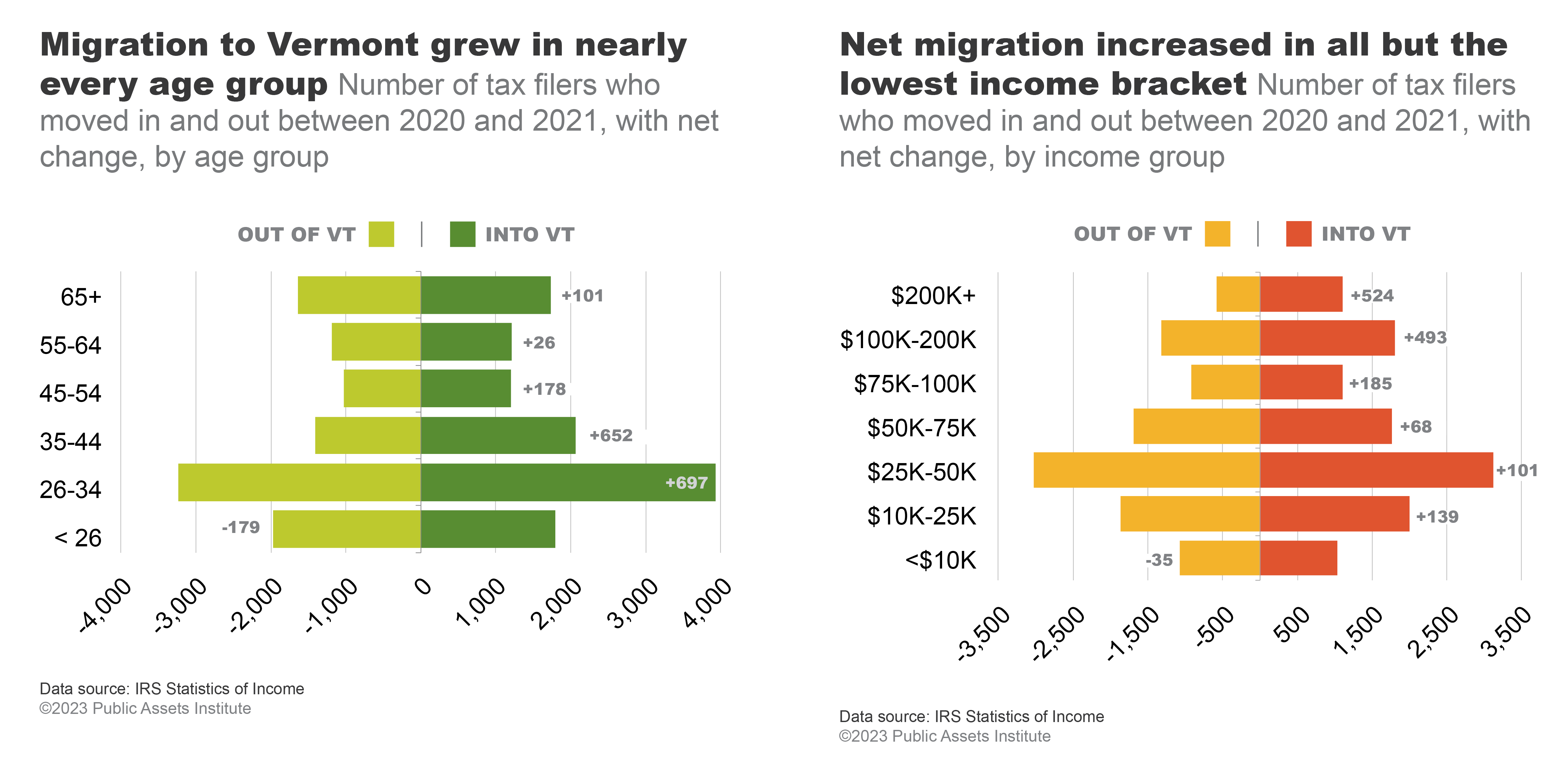Vermont saw a surge of newcomers during the pandemic

Vermont was an attractive destination for people moving from other states during the first two years of the Covid-19 pandemic.
The state saw a net gain of more than 3,000 residents in 2020 and again in 2021, the biggest increases since the IRS began tracking state-to-state migration in the early 1990s.
Many of the new arrivals did not travel far. More than 19,000 people moved to Vermont in 2021, and over half of them came from states in the Northeast.
About 16,400 Vermonters moved away; the most popular destinations were other New England states, New York, and Florida. The pattern was similar from 2019 to 2020.
 In any given year, a small fraction of people in the U.S. relocate to another state—only 3 percent of the nearly 257 million people about whom the IRS has data from 2021. The way the IRS has tracked migration for 30 years is to compare the mailing addresses on Form 1040 tax returns with filers’ addresses from the previous year. The agency uses the number of exemptions reported on the return as a proxy for the number of people in the household.1
In any given year, a small fraction of people in the U.S. relocate to another state—only 3 percent of the nearly 257 million people about whom the IRS has data from 2021. The way the IRS has tracked migration for 30 years is to compare the mailing addresses on Form 1040 tax returns with filers’ addresses from the previous year. The agency uses the number of exemptions reported on the return as a proxy for the number of people in the household.1
More than three-quarters—79 percent—of the people who migrated to Vermont in 2021 came from blue states, as determined by votes for each party in the most recent presidential election. And two-thirds of the Vermonters who reported a move in 2021 went to another blue state.
Migration by age and income
About a decade ago, the IRS also began tracking migration by the age and income of the primary tax filer. For 2021, Vermont saw a net increase in all age brackets except filers under age 26. Again, the IRS reports only the primary filer’s age, not the ages of everyone who migrated in and out. In 2021 Vermont also netted an increase in the number of tax filers in all but the lowest income bracket (less than $10,000 a year). The biggest gains occurred in the highest tax brackets, as has been true over the last decade.
But the age and income information is separate from information about which states people move to or from. So we can know either the age and income of filers or the states they left, but not both at the same time. For example, we know that 1,100 filers with incomes of $200,000 or more moved to Vermont in 2021, but we don’t know where they came from. And we can’t tell where the 35-44-year-olds went after leaving Vermont.
- Not everyone is required to file a personal income tax return. The people included in the 2021 IRS data represented a little more than three-quarters of the total U.S. population. [↩]


